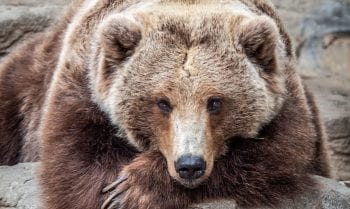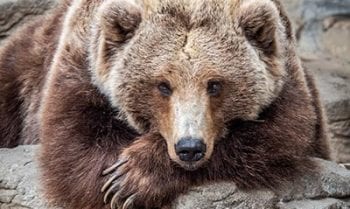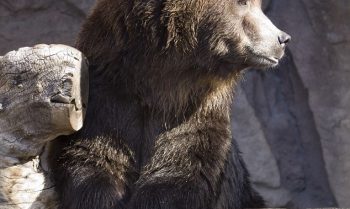April 26, 2019
Living in Harmony
Heed These Tips to Protect Yourself and Animals at Home and in the Great Outdoors
Colorado is getting more and more crowded. Rising home prices, high rent and traffic jams are all issues confronting our state. But there’s another serious downside to our growing population—the impact it has on wildlife and increasing incidents of human-animal conflict.
Bears have become the poster children for that conflict that has become all too common in Colorado. It seems like every week there’s another story of a bear breaking into someone’s car, romping through a mountain hotel or running amok through a residential area in search of food. Unfortunately, there are no winners when bears come into contact with humans. Bears can pose a danger to people when our paths cross and have to be euthanized far too often. Fortunately, there are precautions you can take in your own backyard and in the great outdoors to protect yourself, your property and wildlife. Heed these tips to protect yourself and wildlife when you’re at home and in the wild:
WHEN YOU’RE AT HOME
1) Stash Your Trash
Most of what humans throw away smells like food, and standard metal or plastic trash cans won’t keep out bears. Once bears learn where it’s easy to find garbage, they’ll come back again and again. If you’re in bear country, either use bear-proof trash receptacles or wait until the morning to put your trash out for pick up. According to Colorado Parks and Wildlife, just putting trash out on the morning of a pick-up day, can decrease the chances of a bear visit from by 68%.
2) Feed Birds with Caution
You might think of it as bird seed, but to bears it’s an easily accessible and highly nutritious meal that’s hanging out right by your window. If you love seeing birds in your garden, try using water features, plantings, nest boxes and flowers to attract birds. If you do want to feed birds in your backyard, Colorado Parks and Wildlife recommends taking bird feeders down from April-November during active bear season. For the rest of the year, place feeders at least 10 feet off the ground and 10 feet away from anything bears can climb. Clean up extra seed and debris below the bird feeder on a regular basis.
3) Make Some Noise!
Play your radio, watch TV, and make sure bears know you are home! If your bear-proofing methods aren’t enough and a bear does come near your home, yell, blow a whistle, clap your hands and make other loud noises. But never approach a bear.
WHEN YOU’RE IN THE WILD
1) Prep Your Camp
If you’re going camping, make your tent a food-free zone! Don’t bring anything with an odor into your tent, including food, beverages, snacks, emergency chocolate bars, toothpaste, soap, deodorant, scented toiletries or citronella-based bug repellent. And don’t sleep in the clothes you cooked in. Colorado Parks and Wildlife has some pretty extensive camping tips, so be sure to read their full literature before you explore the outdoors.
2) Keep Kids and Pets Close
When hiking, keep kids between parents and pets secured on a leash. Exploring children and dogs can surprise a bear, and you could face the risk of serious injuries or even fatalities.
3) Be Bear Aware
On the trail, leave the headphones at home and pay attention to your surroundings. Bear activity changes depending on the time of year, so make sure you know what you’re likely to encounter before you go hiking. During active bear season, bears can be seen any time of day including the middle of the day and overnight. Know that tracks, bear scat and shredded logs are all signs that a bear may be nearby.
4) Make Some Noise (Again!)
If wild bears had it their way, they would avoid interactions with humans altogether. Most aggressive encounters with people occur when bears are startled or people get too close. Just by clapping as you walk, talking loudly or shouting decreases your risk an unwanted bear encounter.
To learn more about living with wildlife, check out Colorado Parks & Wildlife’s extensive resource library that covers everything from bears to Canada geese. Then stop by Denver Zoo to check out Harmony Hill—our new and improved habitat for our rescued grizzly bear, Tundra. You’ll have the opportunity to learn their stories and how we can coexist with bears in the wild and our own backyards. Follow us on Facebook, Twitter, Instagram and YouTube for regular news and updates!
Photos by: Melissa Greulich
Subscribe
Be among the first to hear the latest animal updates, important stories and details about all the fun happening around Denver Zoo.
Tags
-
 April 1, 2021
April 1, 2021Redefining Bear Necessities
HOW DENVER ZOO’S URSINE INHABITANTS HAVE KEPT US ON THE CUTTING EDGE OF HABITAT DESIGN FOR 100+ YEARS When Dan Castello’s “Circus, Menagerie and…
-
 May 9, 2019
May 9, 20195 Reasons to Visit Harmony Hill
Denver Zoo’s New Grizzly Exhibit Offers More Than the Bear Necessities for Animals and Guests In just a matter…


